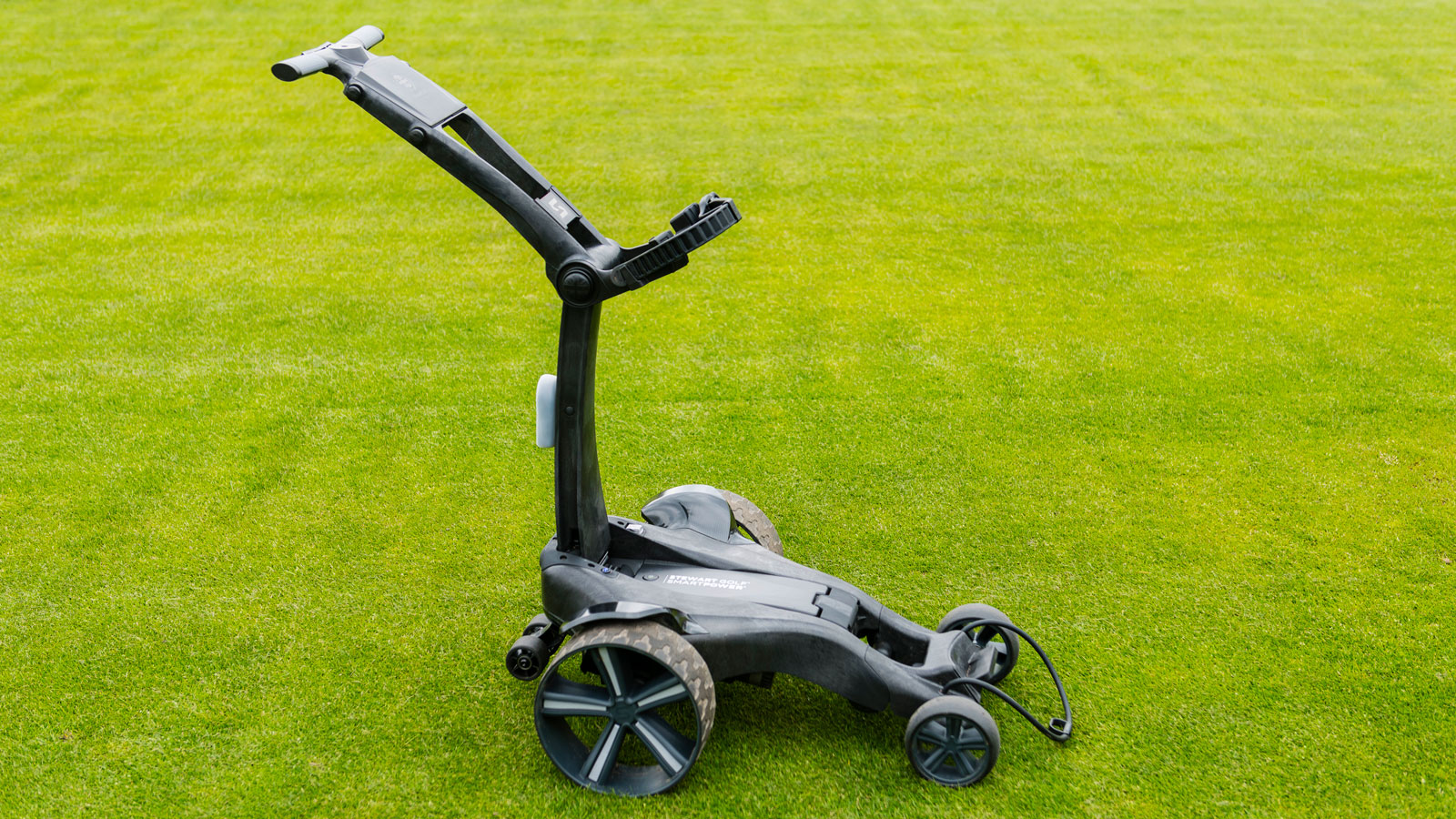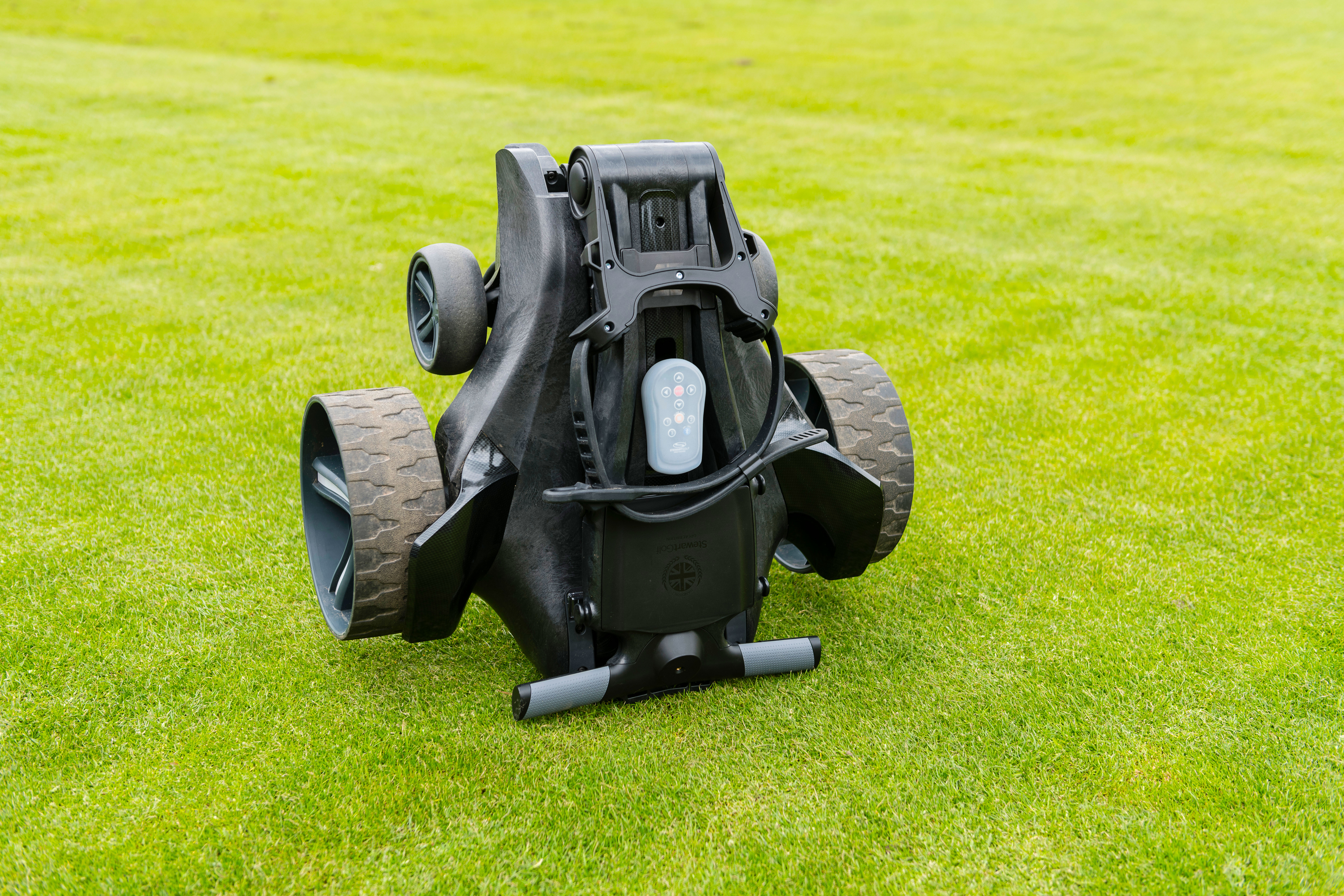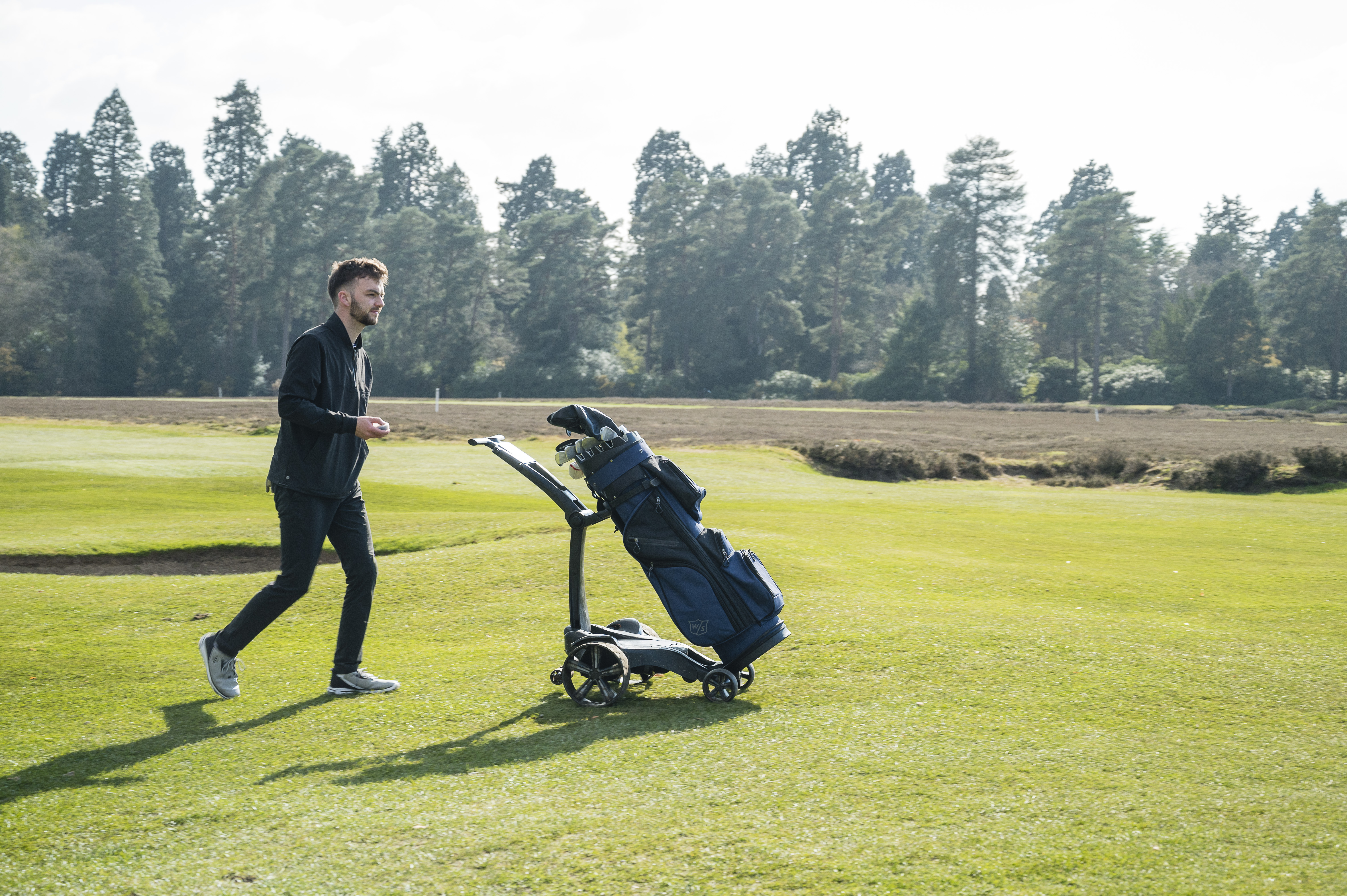
Stewart Golf Vertx Remote Trolley Review
It's been a busy year in the remote electric trolley market. New models have been launched from pretty much every electric trolley brand out there and the innovations in this space have been coming thick and fast. The latest to join the party is Stewart Golf, a brand that, in my opinion, has been the authority on remote technology for the last decade. With the Motocaddy M7 GPS, PowaKaddy RX1 GPS and Alphard Club Booster V2 all offering golfers a new remote experience for 2023, I was interested to see how the Vertx was going to try and cement Stewart's place atop the remote trolley standings.
At first glance, those familiar with the design of Stewart trolleys will notice a lot of similarities and a few refreshments to the overall design. Aside from the sporty new wheel design and refreshed Stewart logo, the bones of this trolley share a lot of similarities to the Q Follow trolley. The Vertx Remote trolley also shares the same folding system we've become familiar with from Stewart. It's a well-designed and efficient two-step system that folds up surprisingly compactly considering the 2023 Remote's overall size. Remarkably, it's the only model versus the Motocaddy and PowaKaddy that has an integrated carry handle into its design, allowing it to be easily moved from point A to point B despite the relatively heavy weight. This is such a simple yet effective piece of design that I'm amazed other brands haven't prioritised adding it to their models.

On-course performance is highlighted by a key new technology under the hood of the Vertx Remote that makes it a class leader for remote functionality. It's called Active Terrain Control (ATC) and it's an all-new operating system that is designed to allow the trolley to tackle any sort of landscape or gradient on the golf course. This new operating system allows the Vertx Remote to react to its surroundings and atomically redistribute power accordingly between the twin motors. ATC uses a powerful microchip that is constantly monitoring the power requirements for each motor, allowing it to redistribute power where necessary to keep the trolley stable.
Unlike standard downhill braking, ATC allows the Vertx Remote to automatically keep travelling at the same speed, uphill or downhill, without the user having to change the power output. Not having to constantly adjust the speed when going up and down the many hills you encounter on a golf course makes walking the course an even more relaxing experience and ATC also allows the Vertx Remote to tackle some seriously steep slopes with total ease. Translated onto the golf course, this technology meant the Vertx is certainly the most in control I've felt of any remote-controlled golf trolley I've tested this year.

If we look closer at the design, we'll see other models like the Motocaddy M7 GPS and PowaKaddy RX1 GPS use 360° rotating front wheels on their respective remote models, whereas the Stewart has opted to continue the use of two, non-rotating front wheels on the Vertx. While I thought this would make the manoeuvrability slightly less nimble than its competitors, I actually found this design made the trolley more stable and equally as manoeuvrable. Having the two wider wheels on the front makes for a much wider base and a more stable ride when the trolley is tackling bumpy terrain. It's a design trait Stewart has stuck by, despite the 360° rotating wheels of its competitors, and I'm glad the brand stuck by it on the Vertx Remote. Importantly, when folded up, these two wheels tuck nicely under the chassis for a compact folded-up position.

The remote is a bit bulkier than its rivals, but it's still an ergonomic and easy-to-grasp design. I'd love to see Stewart update and refine its remote in later models, but the current one is still easy to use and rapid when it comes to responsiveness. Further, the new Vertx benefits from the largest range of battery offerings currently on the market in the shape of the SmartPower lithium battery that offers either 27 or 45-hole ranges. With no screen on the Vertx the status and health of the battery can be viewed in the free Stewart Golf app and its slimline and lightweight design is impressive considering the amount of power and range it provides.
The only thing that the Vertx is lacking versus its competitors from this year is the embedded GPS in the handle. It's something I highly doubt Stewart will try and battle against its competitors, and I think that makes a lot of sense. Stewart Golf knows where its expertise lie and, for the time being at least, that's not in GPS functionality. Indeed, if you already have one of the best golf GPS devices or a rangefinder, then the integrated GPS systems on the competitor remote electric trolleys might be made redundant. On the other side of the coin, if you don't have one of these, this is where the likes of the Motocaddy M7 GPS and PowaKaddy RX1 GPS's integrated systems come into their own. As mentioned earlier, there is quite a choice in this part of the market this year. Simply put, if you're after the most pleasurable and efficient remote golf trolley experience, Stewart Golf is still very much the brand at the top of the tree for this.







